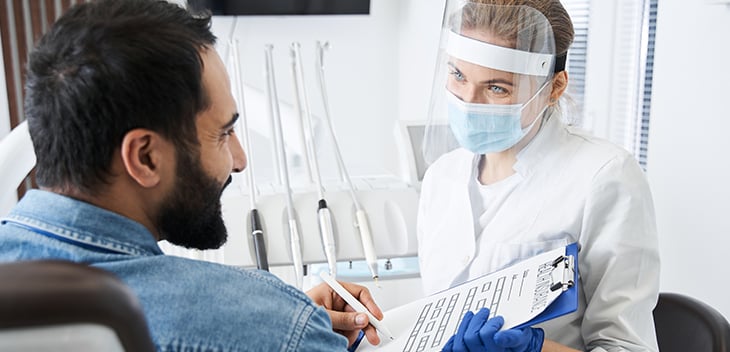10 Keys to Increasing Dental Case Acceptance

We’ve all had it happen.
You do thorough records on a new patient - radiographs, probing depths, and a comprehensive exam. It’s obvious to you that there are issues that need to be taken care of, so you present your findings to your patient. You think it’s all said and done… and then they say no.
Nothing else matters if your patients don’t consent to treatment.
So how do you get your patients to ‘yes’? Here are ten proven tips to help refine your case presentation and enrollment skills.

1. It’s about emotion, not data.
Dentists are often analytical people. We may think pouring information over patient’s heads will make them understand and agree to treatment, but most of the time that isn’t true. People tend to make purchases based on what they WANT, not necessarily what they NEED. Enrollment should focus on building wants and moving people towards those wants.
2. Start with YOU (and your team).
The mindset of you and your team will be critical to influencing your patients. If you are in a foul mood, do what it takes to change your emotional state before you enter the room. Also, remind yourself you are not “selling” anything. You are there to help guide the patient into taking care of themselves.
3. Build rapport.
Set the groundwork for acceptance by fostering connection and friendship first. Remember that people like people like themselves. Find common interests. Practice “mirroring and matching” your patients energy levels, speech volume, and body language. If they like and feel connected to you, they will be more likely to trust what you tell them.
4. Preframe.
When your assistants are noting areas of concern, they should mention it to the patient. If possible, they should show the area to the patient on radiographs or intraoral camera. When you come in, they should repeat their concerns in their handoff to you.
5. Ask questions and LISTEN.
Have the patient be an active part of their treatment plan. Ask them about their dental concerns. Are they focused on function? Cosmetics? Price? Comfort? Spend less time talking and more time listening. You’ll know how to present your plan once you know their values.
6. Present problems and be the solution.
Show them the areas that worry you on the computer screen or video monitor. Seeing is believing. Then tell them what they are seeing. Let them know what may happen if the areas were left alone. Then lastly, offer solutions to repair the issues.
7. Speak as if you already know they will say “yes.”
Once you have completed presenting problems and solutions, guide the patient to thinking about a positive future, based on their needs and values. “When we get this fixed, won’t it be great to be able to chew on that side again?” “I can’t wait to see your dazzling new smile!”
8. Address objections.
Ask “Do you have any concerns about our plan or how we can make it happen?” Worries about time, finances, discomfort may be addressed. Often, the patient won’t mention it to the doctor but will wait until they speak to the assistant or financial coordinator, so be sure they know how to answer these objections and provide solutions.
9. Know when to shut up.
Once you have a “yes,” stop talking. Nothing else is needed and you may just end up creating new concerns or objections they weren’t even thinking about.
10. Close and hand off for financial arrangements.
Ask questions to get a “yes.” “If we are able to make it work with your budget, are you ready to get your mouth healthy and beautiful?” “Does our plan make sense? Does it sound like a good approach to you?” Let your patient know they have made a great decision. Once you have gotten your yes, it is time to immediately hand off to the person making appointments and financial arrangements.
Case acceptance is an art of influence. You are convincing your patient to prioritize their oral health and understand how important it is, but that can’t be done by just inundating them with data. Connection, trust, listening skills, education, reassurance, and flexibility are critical components of getting your patient to say ‘yes’ to care.


